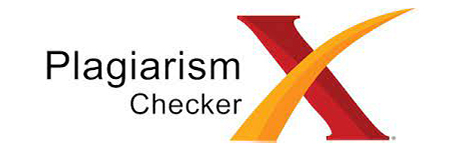Menggali Keunggulan Kompetitif UMKM, Analisis Swot dan Implikasi Strategis pada Kota Bandar Lampung
DOI:
https://doi.org/10.70716/ecoma.v2i3.75Keywords:
Bandar Lampung, Competitive Advantage, MSMEs, SWOT AnalysisAbstract
This study examines the concept of competitive advantage based on Michael E. Porter's theory, with a focus on its application in the local context, namely the city of Bandar Lampung. Competitive advantage is defined as the ability of an organization or region to create unique value that is able to compete in the global and domestic markets. This research explores various elements that affect the competitiveness of Bandar Lampung, including SWOT analysis, regional description, as well as supporting factors such as infrastructure, government policies, and local resources. Based on the analysis carried out, it was found that Bandar Lampung has strategic strengths, such as a supportive geographical location and potential for the creative economy, but still faces challenges such as lack of digitalization in the SME sector and environmental threats. The suggested strategic implications include economic diversification, SME digitalization, environmental conservation, and strengthening city branding. The results of this research are expected to make a real contribution to improving the competitiveness of Bandar Lampung at the national and international levels.
Downloads
References
Abubakar, H. (2017). Model transformasi organisasi usaha perjalanan wisata Provinsi Sulawesi Selatan. Manajemen, 3(8), 1–15.
Adiputra, P. I., & Mandala, K. (2017). Pengaruh kompetensi dan kapabilitas terhadap keunggulan kompetitif dan kinerja perusahaan. E-Jurnal Manajemen, 6(11), 6090–6119. https://doi.org/10.24843/EJMUNUD.2017.v06.i11.p08
Bilgies, L. F. (2017). Keunggulan kompetitif dalam menciptakan inovasi untuk kewirausahaan strategis. Manajemen Kewirausahaan, 3(2), 322–343.
Fathany, I., & Purnomo, D. (2022). Analisis daya saing ekspor kopi Indonesia di pasar internasional. Ekonomikawan: Jurnal Ilmu Ekonomi dan Studi Pembangunan, 22(2), 24–31. https://doi.org/10.30596/ekonomikawan.v22i2.10829
Fauzi, F., Gajah, S., & Takengon, P. (2020). Implementasi manajemen strategis pada program school improvement di MTsS Maqama Mahmuda. Jurnal Manajemen Pendidikan Islam, 5(1), 26–43. https://doi.org/10.18860/jmpi.v5i1.10465
Gumulya, D., & Helmi, I. S. (2017). Kajian budaya minum kopi Indonesia. Jurnal Dimensi Seni Rupa dan Desain, 13(2), 153–172. https://doi.org/10.25105/dim.v13i2.2470
Hakim, L., & Sugiyanto, E. (2017). Karakteristik perubahan organisasi sebagai upaya pengembangan organisasi di industri batik Laweyan Surakarta. Riset Manajemen & Bisnis, 12(3), 407–420.
Hu, Q. (2019). Analysis on the impact of knowledge-based employee’s competency on performance in e-commerce enterprises. Advances in Economics, Business and Management Research, 68, 550–557. https://doi.org/10.2991/aebmr.k.191217.101
Irmawati, N. S., & Indrawati, L. R. (2022). Analisis faktor-faktor yang mempengaruhi ekspor kopi Indonesia. Growth Jurnal Ilmiah Ekonomi Pembangunan, 1(2), 43–56. https://doi.org/10.55064/growth.v1i2.10
Malhotra, N., & Hinings, B. (2015). Unpacking continuity and change as a process of organizational transformation. Long Range Planning, 48(6), 643–655. https://doi.org/10.1016/j.lrp.2015.09.002
Nugraha, D., Sari, P., & Yuliani, A. (2022). Penguatan UMKM berbasis ekonomi kreatif melalui digitalisasi bisnis di era industri 4.0. Jurnal Ekonomi dan Bisnis, 25(1), 78–91. https://doi.org/10.22219/jeb.v25i1.20972
Pakaya, R. A. (2011). Pengaruh manajemen sumber daya manusia, strategi dan manajemen transformasi terhadap keunggulan bersaing. Manajemen dan Inovasi, 8(3), 102–124.
Paramita, R. W., Rizal, N., & Sulistyan, R. B. (2021). Metode penelitian kuantitatif. Lumajang: Widya Gama Press.
Prayoga, D., Wibowo, S., & Ariyani, L. (2021). Analisis SWOT dan strategi pengembangan UMKM berbasis digital di era pandemi COVID-19. Jurnal Manajemen dan Bisnis, 10(1), 55–68. https://doi.org/10.24912/jmb.v10i1.11543
Rachmawati, S., Santoso, T., & Kusnadi, H. (2022). Infrastruktur dan daya saing ekonomi wilayah perkotaan di Indonesia. Jurnal Ekonomi dan Pembangunan Indonesia, 22(2), 215–233. https://doi.org/10.21002/jepi.v22i2.1365
Rohim, A., Wibowo, A., & Mulyani, D. (2021). Digital transformation and innovation strategy in Indonesian SMEs. International Journal of Economics and Management Studies, 8(4), 112–121. https://doi.org/10.14445/23939125/IJEMS-V8I4P113
Rohman, F., Sihombing, R., & Putra, A. (2020). Strategi pengembangan daya saing daerah berbasis digital economy. Jurnal Ilmiah Ekonomi dan Bisnis, 17(2), 122–138. https://doi.org/10.35972/jieb.v17i2.1065
Sari, R. A., & Pratama, A. (2021). Infrastruktur ekonomi dan daya saing daerah di Indonesia. Jurnal Ekonomi Pembangunan, 19(2), 101–115. https://doi.org/10.21831/jep.v19i2.38445
Sihombing, P., Rahmawati, N., & Nugroho, F. (2023). UMKM di era digitalisasi: Strategi adaptasi dan inovasi. Jurnal Ilmu Ekonomi Terapan, 8(1), 44–57. https://doi.org/10.26418/jiet.v8i1.2064
Soetriono, S., & Hidayat, A. (2010). Daya saing ekspor kopi robusta Indonesia di pasar internasional. Jurnal Sosial Ekonomi Pertanian, 4(2), 226–277.
Susanti, D., & Aribowo, H. (2022). Digital transformation readiness among Indonesian SMEs. Journal of Business and Management Review, 3(5), 401–415. https://doi.org/10.47153/jbmr35.11853
Widyawati, A., Nugroho, E., & Setiawan, T. (2022). Analisis SWOT dalam peningkatan daya saing sektor kreatif di Indonesia. Jurnal Manajemen Strategi, 15(3), 201–215. https://doi.org/10.32493/jms.v15i3.1346
Zhao, Y., Li, H., & Wang, J. (2021). Digital transformation and firm performance: Evidence from small and medium enterprises. Technological Forecasting and Social Change, 166, 120–130. https://doi.org/10.1016/j.techfore.2021.120648
Downloads
Published
How to Cite
Issue
Section
License
Copyright (c) 2024 Hikmal Maulana, Destri Hafifah, Amelia Putri Agustin

This work is licensed under a Creative Commons Attribution-ShareAlike 4.0 International License.











